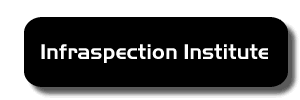Infrared Inspections of Building Envelopes
Sponsored by:


Infrared Inspections of Building Envelopes
As winter rapidly approaches, many people are beginning to think about the upcoming heating season and the thermal performance of their homes and offices. Thermal imaging can be extremely useful in identifying areas of excessive heat loss or air leakage. The effectiveness of an infrared inspection will depend upon how the inspection is performed.
A common misconception is that infrared inspections are performed merely by looking at the exterior surfaces of a building from the outside of the structure. While this practice may identify gross defects for some structures, it usually fails to detect more serious defects such as air infiltration and heat distribution problems within the building.
For best results, infrared inspections of buildings should be performed from the inside of the building when there is a minimum inside/outside temperature differential of 10 Celsius (18 F) degrees for several hours prior to, and during the inspection. The inspection should include all exterior walls, windows, doors and ceilings imaged from the interior of the building. Performing the inspection on a calm night will eliminate errors due to solar loading and wind. Additionally, the building HVAC system should be operated under normal conditions. For commercial buildings this may involve overriding the HVAC system controls to duplicate daytime settings.
If you are concerned about the thermal performance of your building, the best time to conduct an infrared inspection is at the beginning of the heating season. Performing your inspection now will enable you to make necessary repairs before the coldest weather sets in.
As always, a certified, experienced thermographer will help to ensure that you receive accurate and reliable data.

